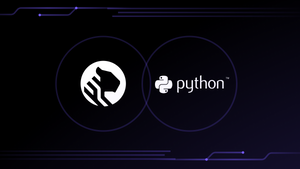A Sneak Peek Into the State of PostgreSQL 2023
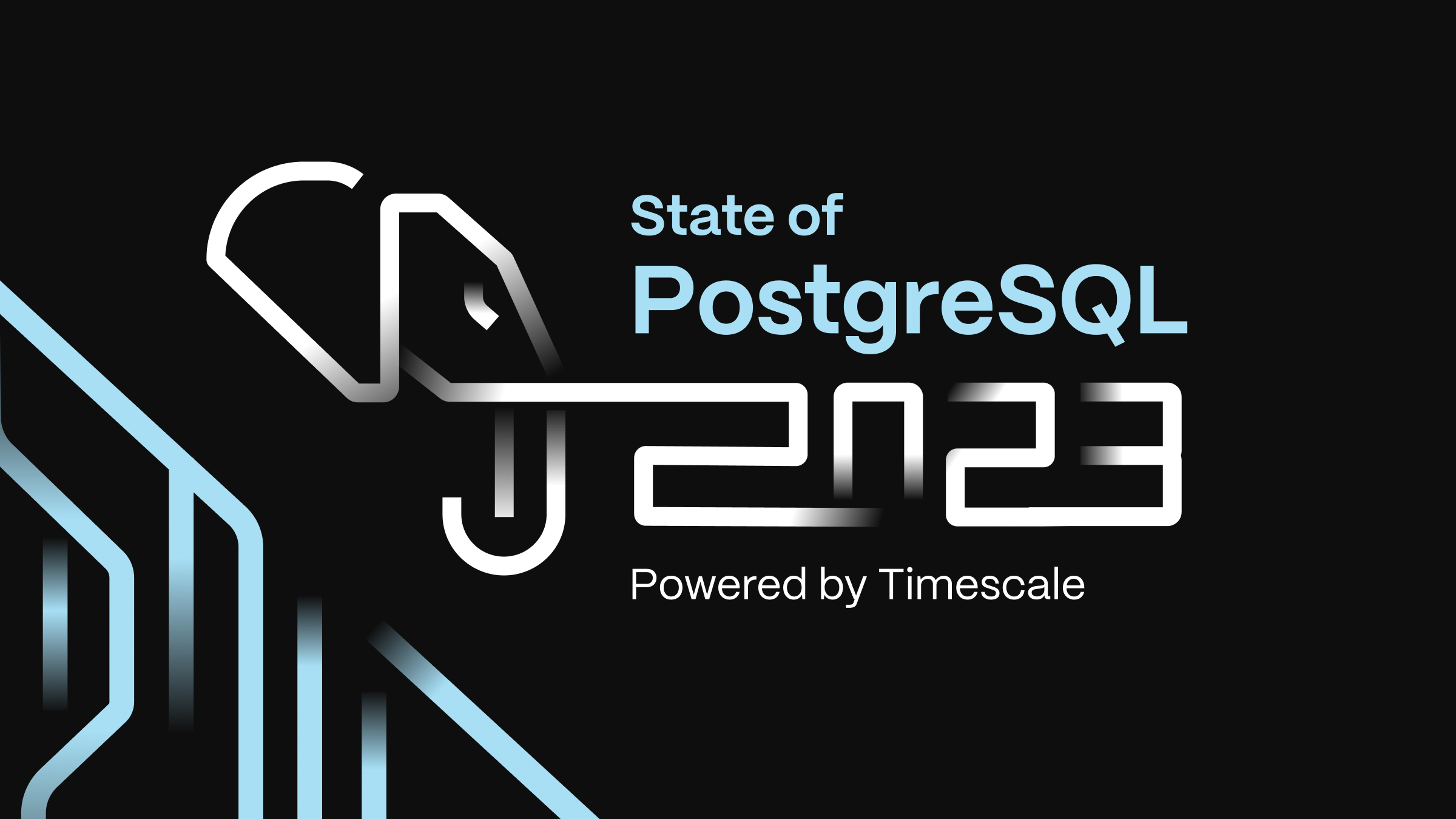
The State of PostgreSQL 2023 survey results are here!
Now in its fourth edition, the State of PostgreSQL survey is Timescale’s way of helping build a better and more inclusive PostgreSQL community. Once again, we’re sharing the survey results with the broader public so that, together, we can learn more about this great group of techies and their experiences with PostgreSQL to propel the community forward.
In this blog post, you can take a sneak peek at some of our early findings. Here’s some context: the survey ran for six weeks, between August 1, 2023, and September 15, 2023. During that time, 888 people provided responses, which we aggregated to generate this report. If you answered our questions, shared the survey on social media, or sent it to a friend—thank you! Your support is invaluable to us.♥️
Timescale’s love for PostgreSQL, one of the world’s most advanced open-source databases with 30+ years of history, runs deep. We built our products on PostgreSQL, we love enabling other developers to use this reliable technology, and we wouldn’t exist without it and the extensibility it provides.
In 2019, Timescale launched the first State of PostgreSQL report, advancing our desire to provide greater insights into the vibrant and growing PostgreSQL user base. From the most popular programming languages and favorite PostgreSQL information sources to whether respondents use PostgreSQL for work or personal projects (or both!), the State of PostgreSQL provides valuable insights into this great community. Following a one-year hiatus due to the pandemic, we resumed the annual survey in 2021. This is the fourth State of PostgreSQL report. Check out the second and third report editions.
And now, the moment we have all been waiting for! 🥁 Go on, have a look! 👀 And don't forget to check out the complete report for an in-depth portrait of the PostgreSQL community in 2023.
The State of PostgreSQL 2023 Demographics
Where is the PostgreSQL community around the world, how long have they been using PostgreSQL, and what is their current role? Let’s find out. 🔎
What is your primary geographic location?
Mirroring the 2021 and 2022 survey results, respondents from EMEA (Europe, Middle East, Africa) account for almost half of all respondents, but this year, APAC (Asia-Pacific) has increased to 20.3 %, up 9.3 percentage points from last year (11 %).
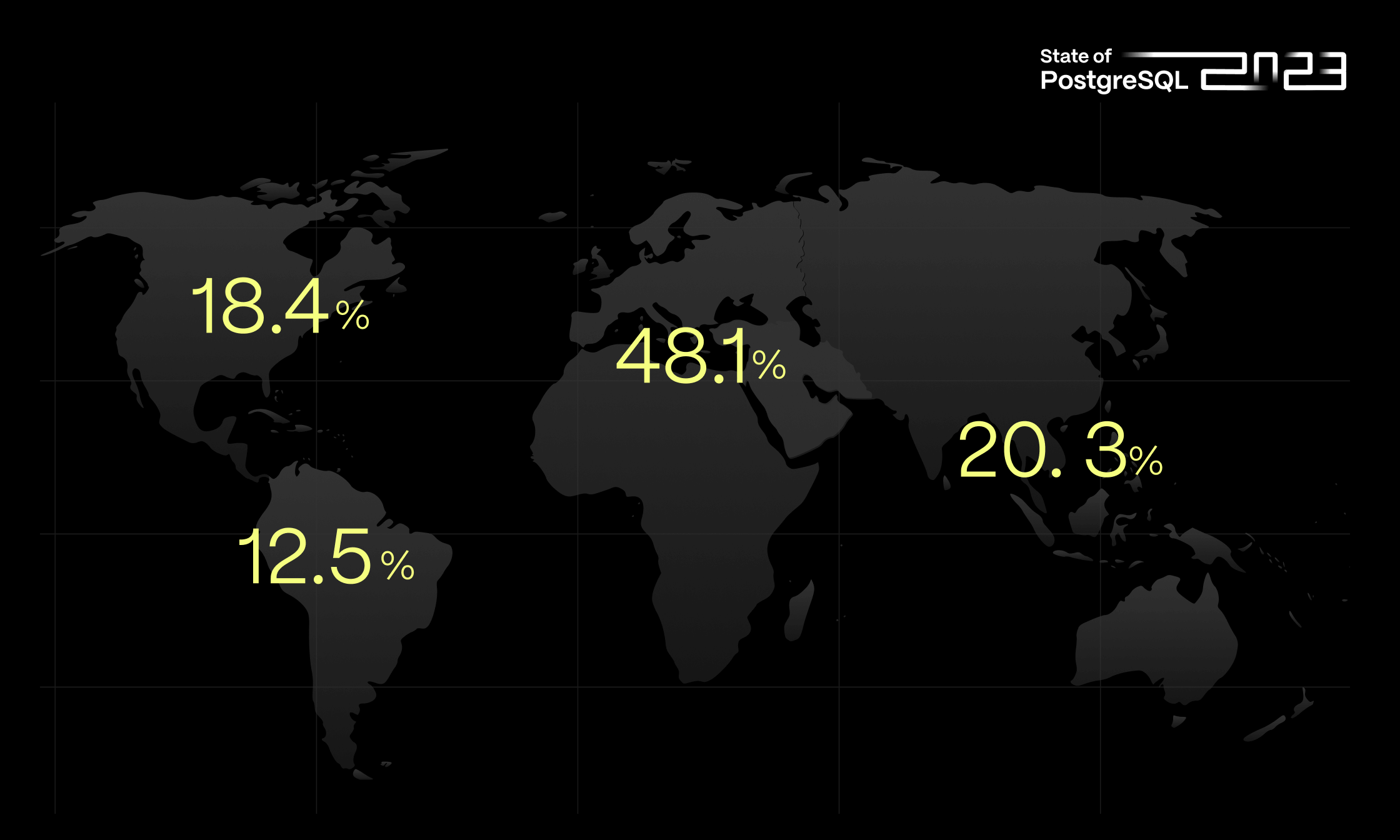
How long have you been using PostgreSQL?
According to DB engines, PostgreSQL’s popularity remains steady. Unsurprisingly, the number of new PostgreSQL users experimenting with the database for less than a year has been growing for three consecutive years— from 6.1 % in 2021 to 6.4 % in 2022 and now 8.1 % in 2023.
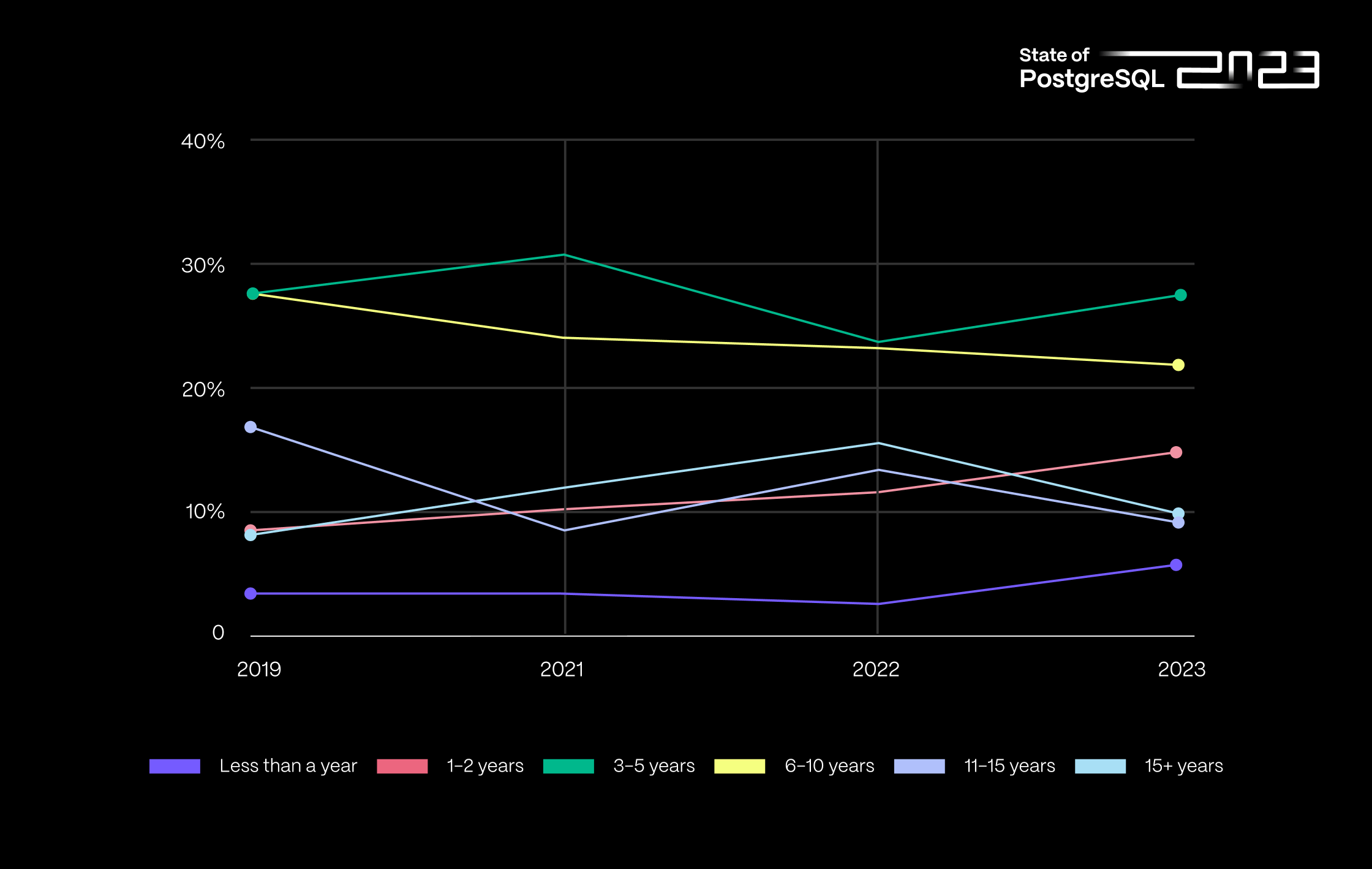
What is your current profession or job status?
Note: In 2023, we added four new options: Backend Software Developer/Engineer, Frontend Software Developer/Engineer, Fullstack Software Developer/Engineer, and Management [C-level, VP, Director, (Co)Founder].
In search of more nuanced answers, we changed the options for this ☝️ question this year.
The percentage of PostgreSQL users working as software developers/engineers hasn’t changed dramatically—from 43.3 % last year to 46.1 % in 2023—but we can now segment them: 28.3 % of respondents are backend developers, while 17.8 % are full-stack devs. Fewer software architects answered the survey in 2023, with a decrease from 13.2 % to 6.6 %. At the same time, we learned that 9.7 % of participants take on managing duties at their companies.
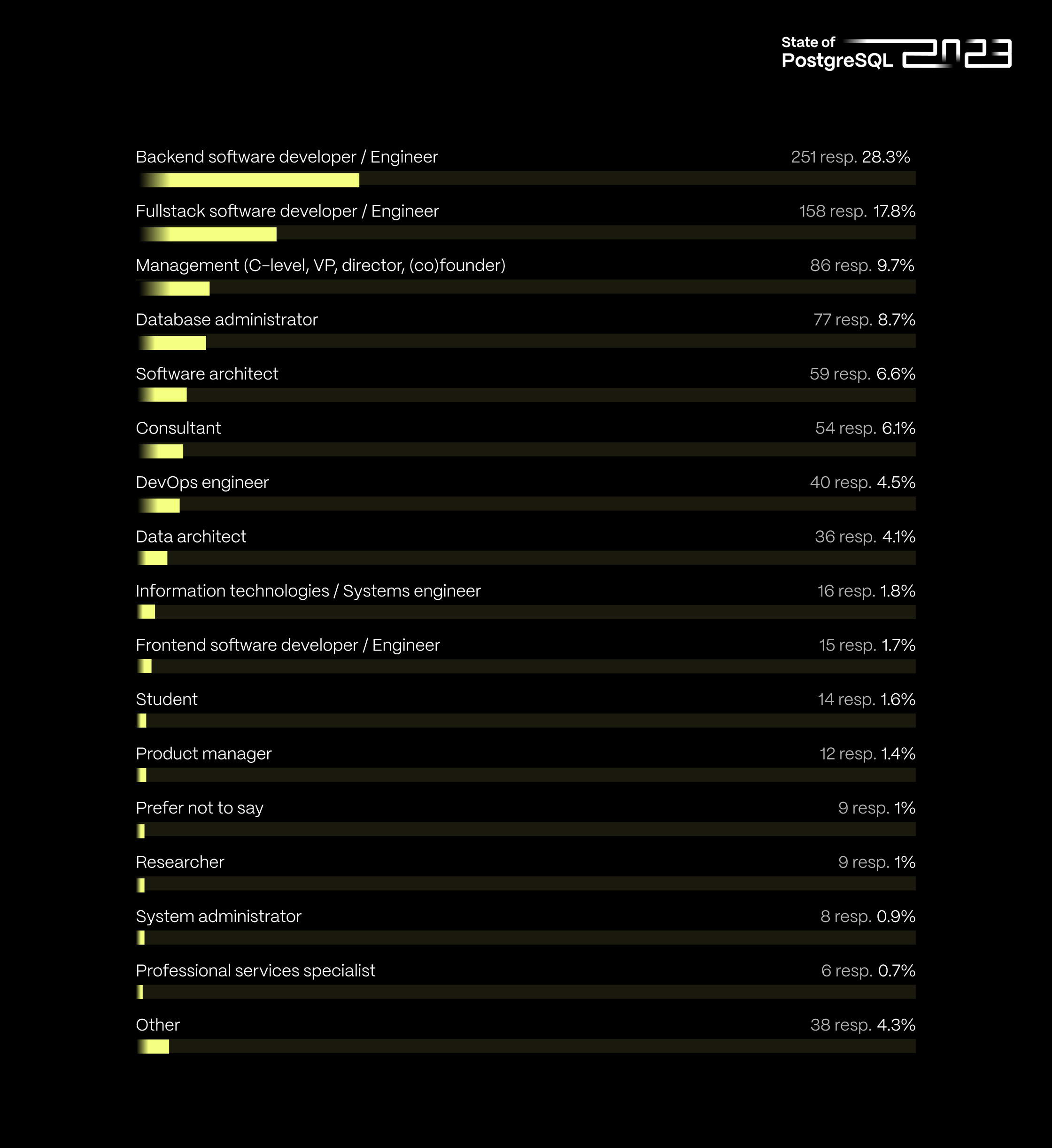
Community
This year, apart from our usual questions about PostgreSQL contributions and years of experience with this reliable open-source database, we also wanted to see whether PostgreSQL remains a case of love at first sight (or, should we say, at first query) for developers.
Have you ever contributed to PostgreSQL?
Forty-four percent of PostgreSQL users with 15+ years of experience have contributed to PostgreSQL at least once. In fact, regardless of their experience, users across the board have contributed to the PostgreSQL community.
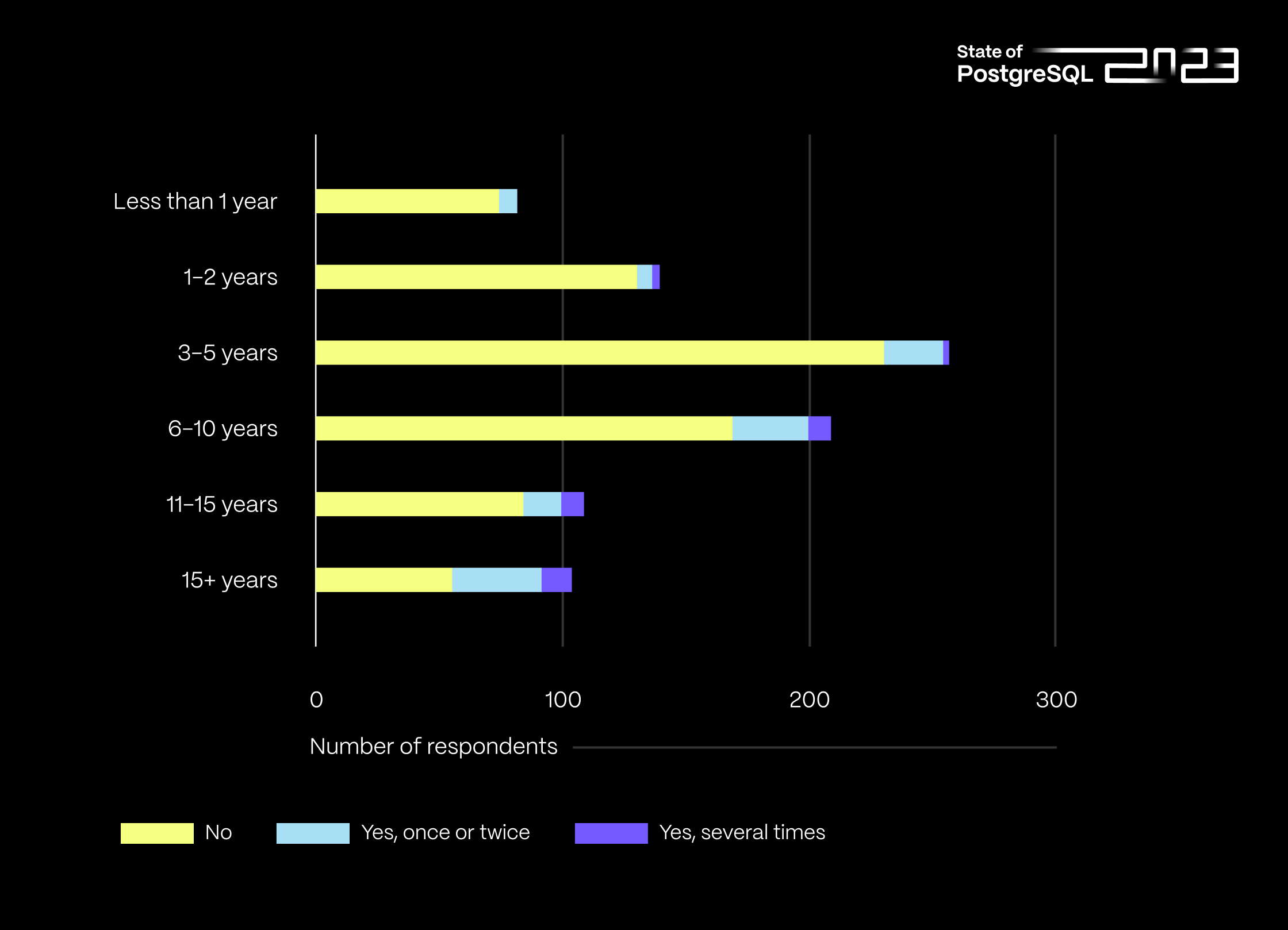
How would you rate your first experience with PostgreSQL?
PostgreSQL’s reputation as a developer-friendly database remains rock-solid. The resounding majority of respondents (~91 %) rated their first experience with PostgreSQL as positive, ranging from medium to extremely easy. The average experience is rated at 3.7 (on a 1-5 scale).
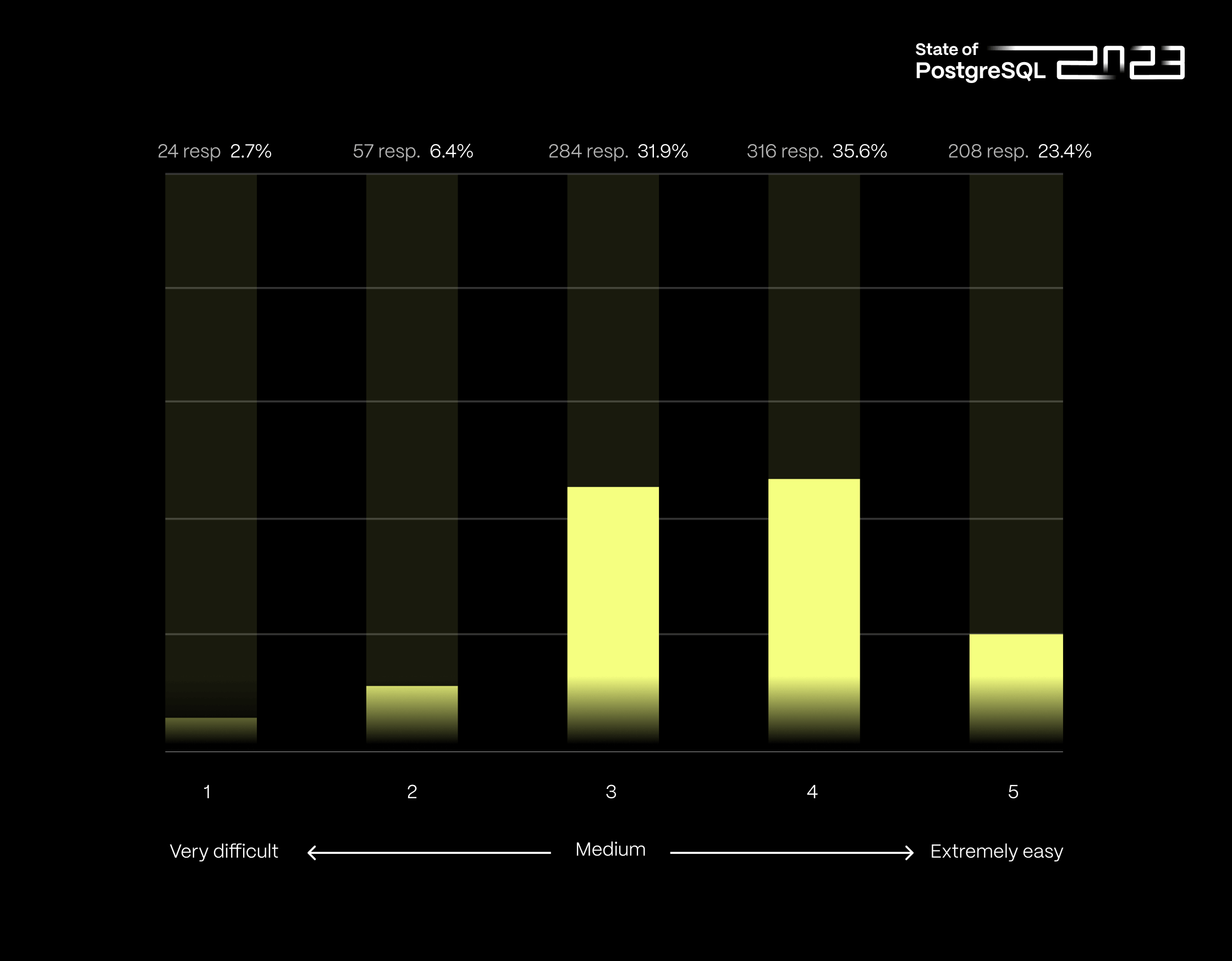
A total of 497 respondents answered bonus questions, shedding light on what they like the most about the PostgreSQL community:
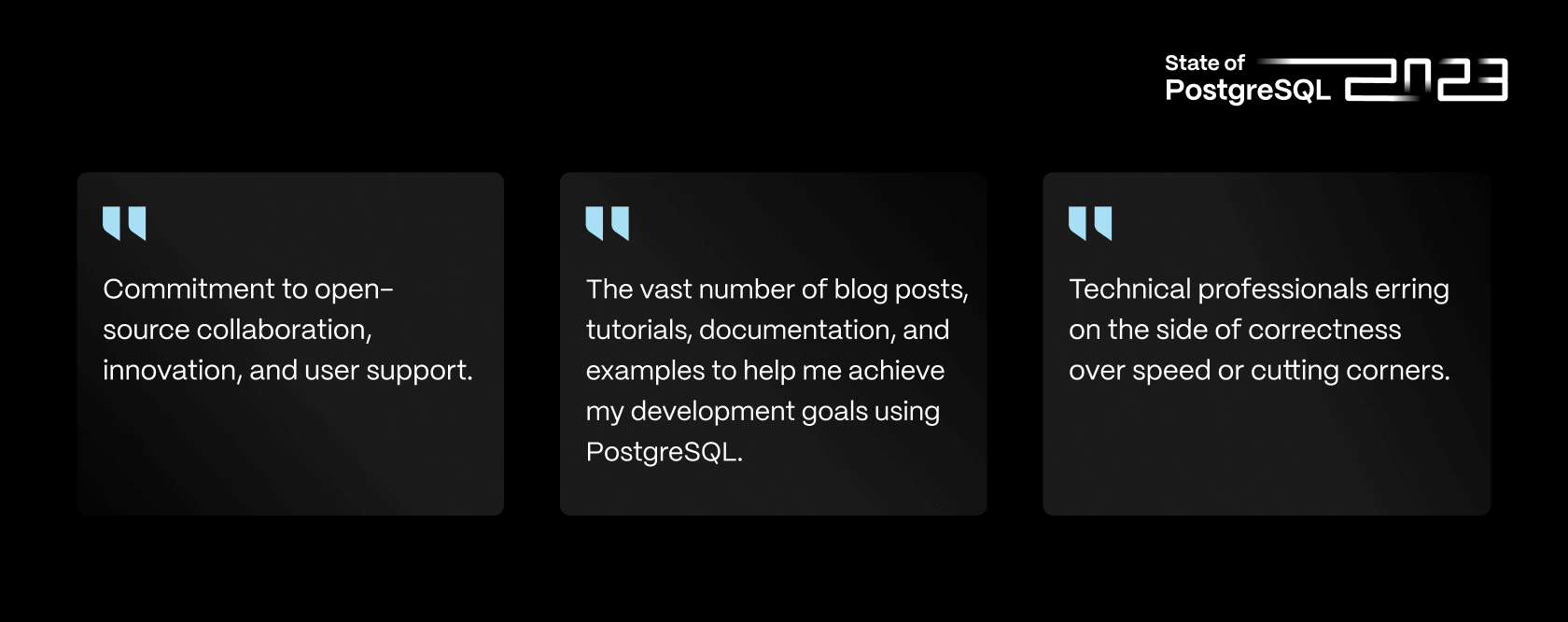
And speaking of blog posts and tutorials, head to our Developers portal to learn more about PostgreSQL.
AI 🤖
Undoubtedly, 2023 was an extraordinary year for AI technology, so we couldn’t leave it out of our survey. We were also curious to see how the PostgreSQL community works with vector data and Large Language Models (LLMs) and which AI tools they use.
Do you currently use AI tools, and what’s your attitude toward them?
It turns out that 45 % of respondents have a favorable attitude toward AI tools, 35.2 % are neutral, and only 19.7 % have an unfavorable opinion. And even though there are more favorable views, 63.1 % say they don’t currently use AI tools in their workflow, versus the 36.9 % that do. See which tools the community is actually using in our complete report.
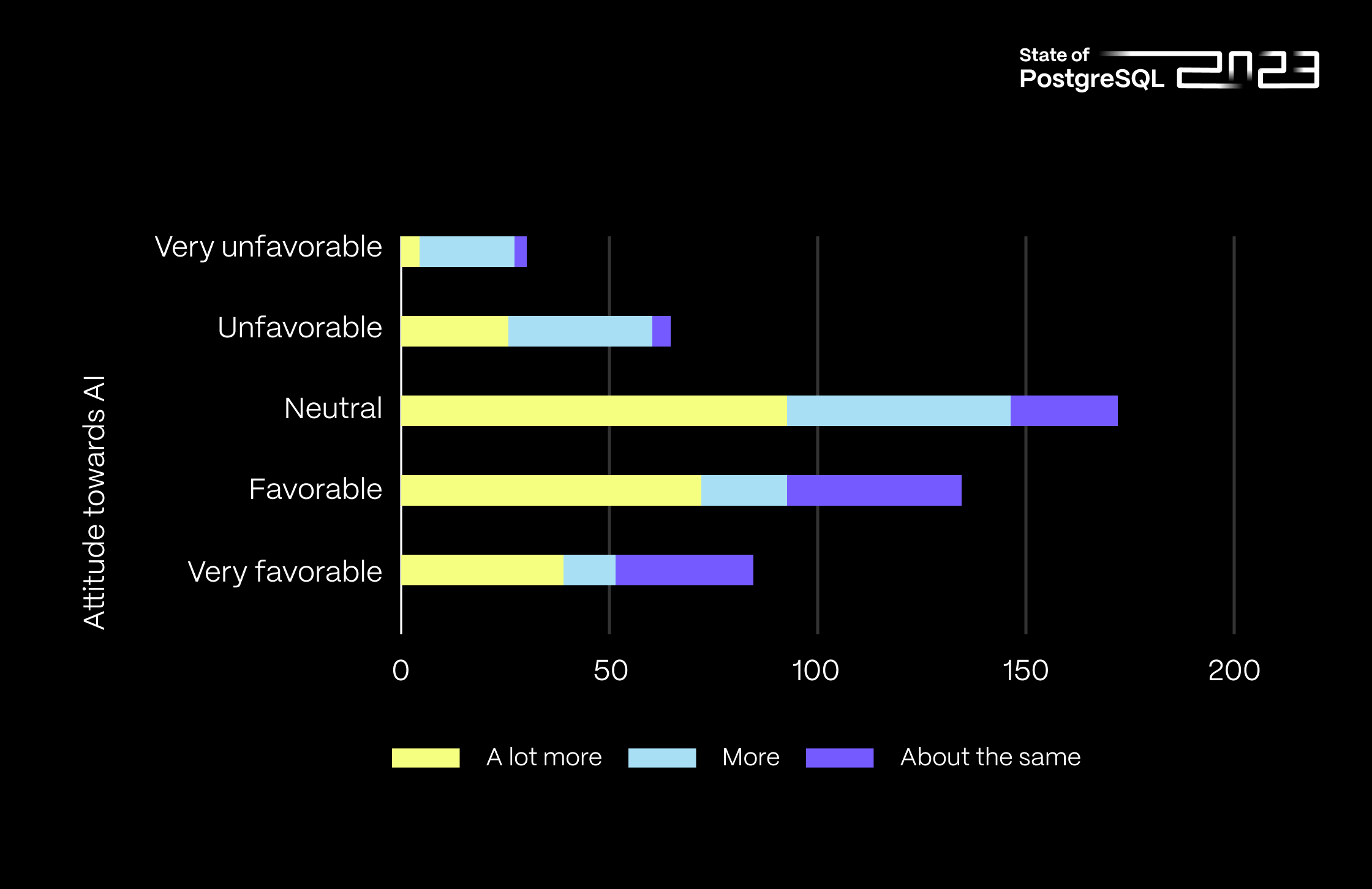
What are the main benefits you receive from using pgvector and PostgreSQL for AI/ LLM workloads?
Of those who responded “yes” to having used pgvector and PostgreSQL as their vector database for AI/ LLM workloads (54 respondents), a little over one-third (37.7 %) said the main benefit is the ability to keep vector and relational data in the same database.
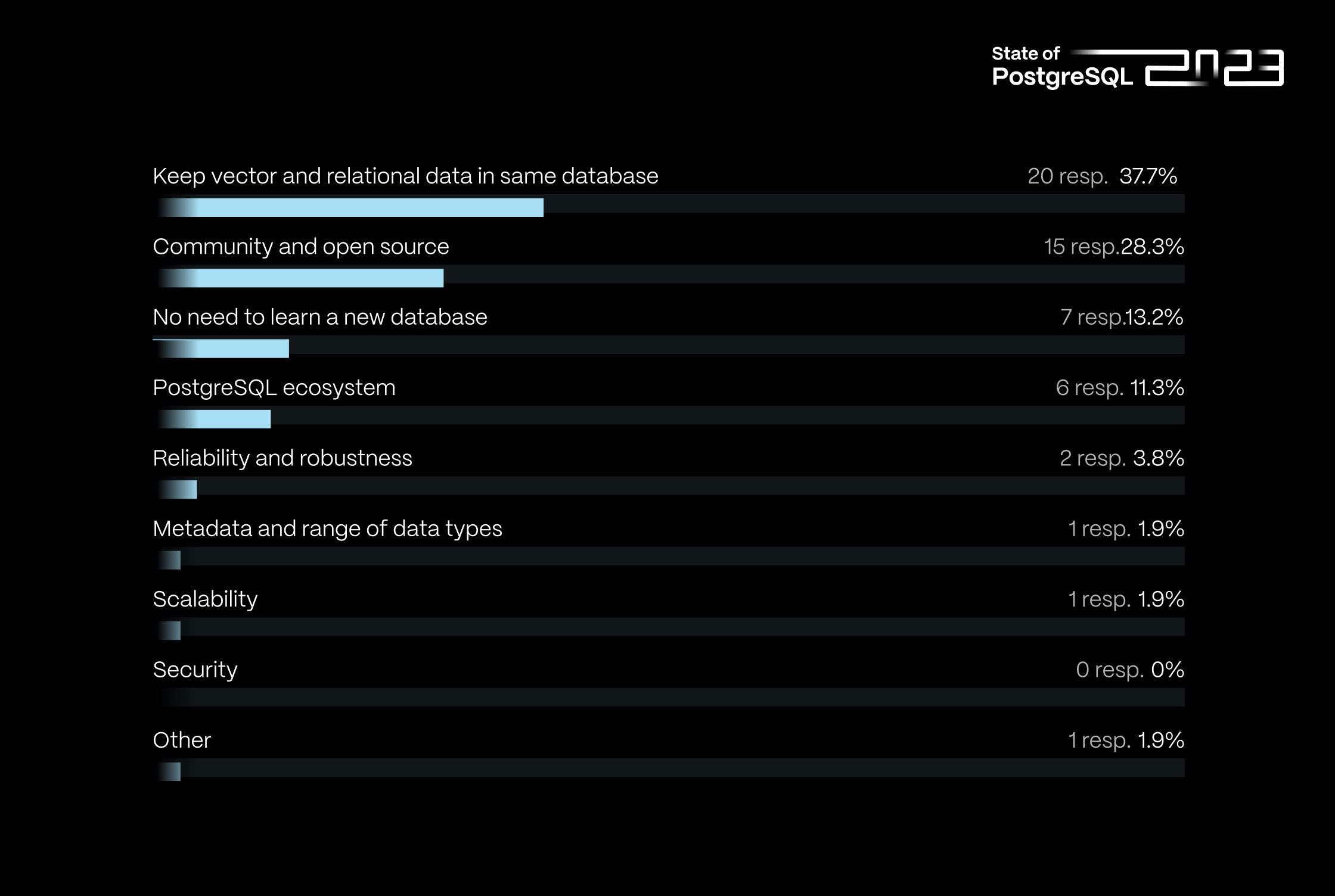
Ecosystem and Tools
We’ve said it many times, and we’ll say it again: we love PostgreSQL’s rich ecosystem of connectors and tools, and we’ve leveraged them time and time again here at Timescale. Needless to say, we’re always curious to know which ones you are using, too.
What are your top 3 favorite or most frequently used PostgreSQL extensions?
In this freeform question, respondents shared their favorite PostgreSQL extensions. The 2023 top 10 responses were quite different from the previous year, with several new extensions, such as pg_fdw, pg_repack, and pg_cron, making the list this time around.
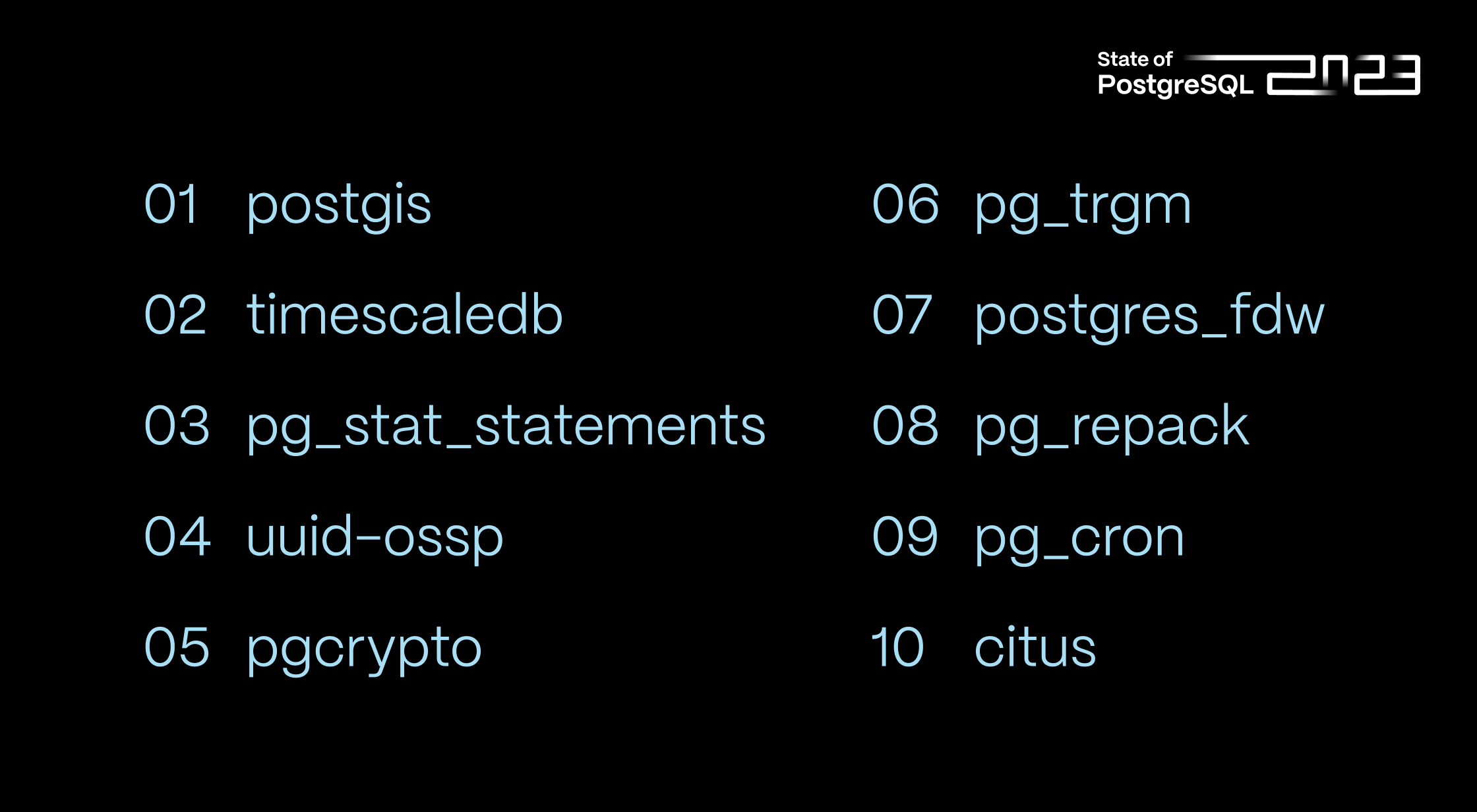
What other third-party tools do you regularly use with PostgreSQL to assist with application development?
Almost half of 2023’s respondents (43.5 %) said they do not use other third-party tools—of those who use one, Depesz EXPLAIN and PgBouncer were the most common responses.
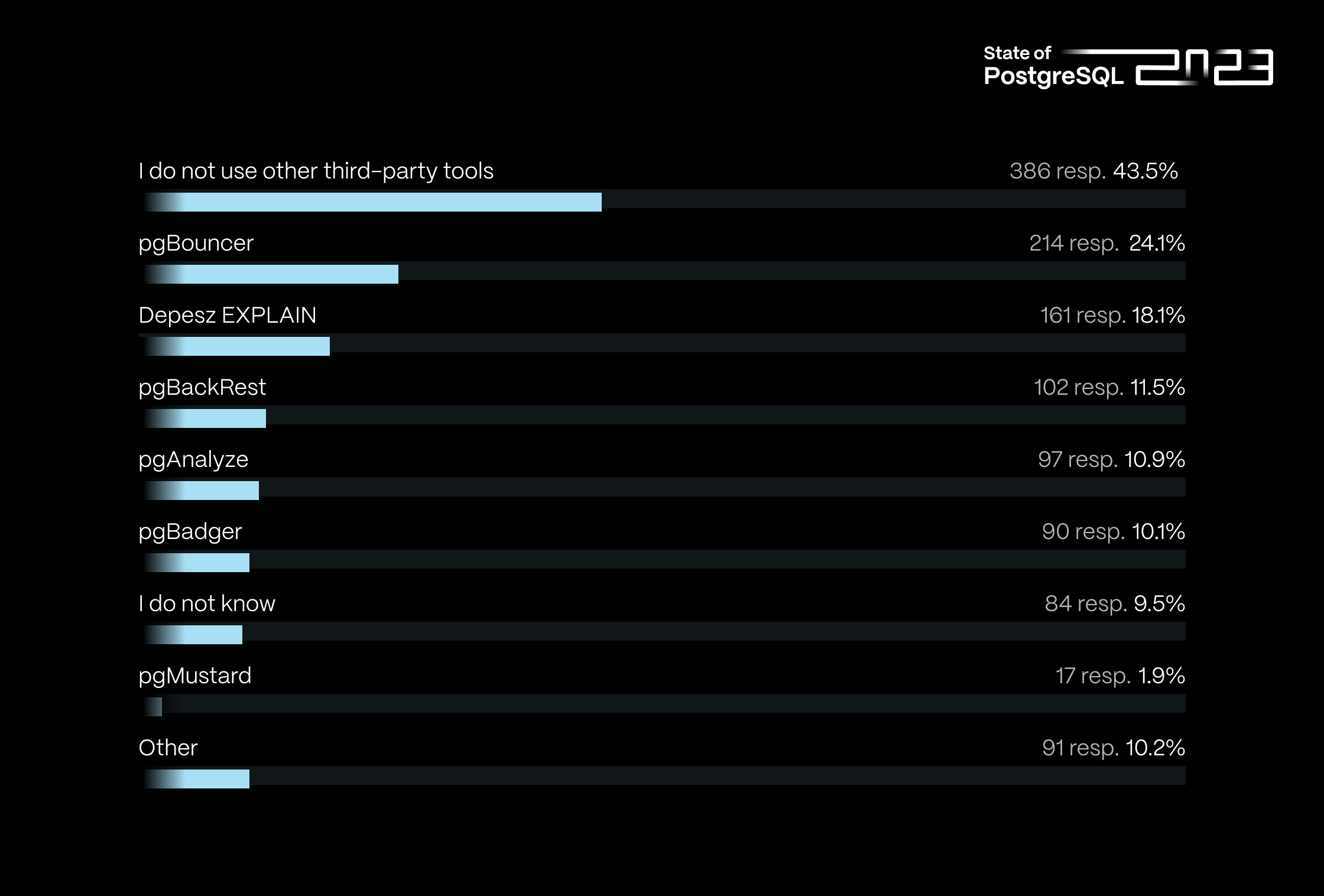
Which visualization tools do you use?
While 18 % of respondents do not use visualization tools, the majority of respondents rely on Grafana (38.2 %), pgAdmin (36.6 %), and DBeaver (27.4 %) for data visualization. These results are consistent with 2021 and 2022 responses.
👉 Get started with Grafana with our guide to Grafana videos.
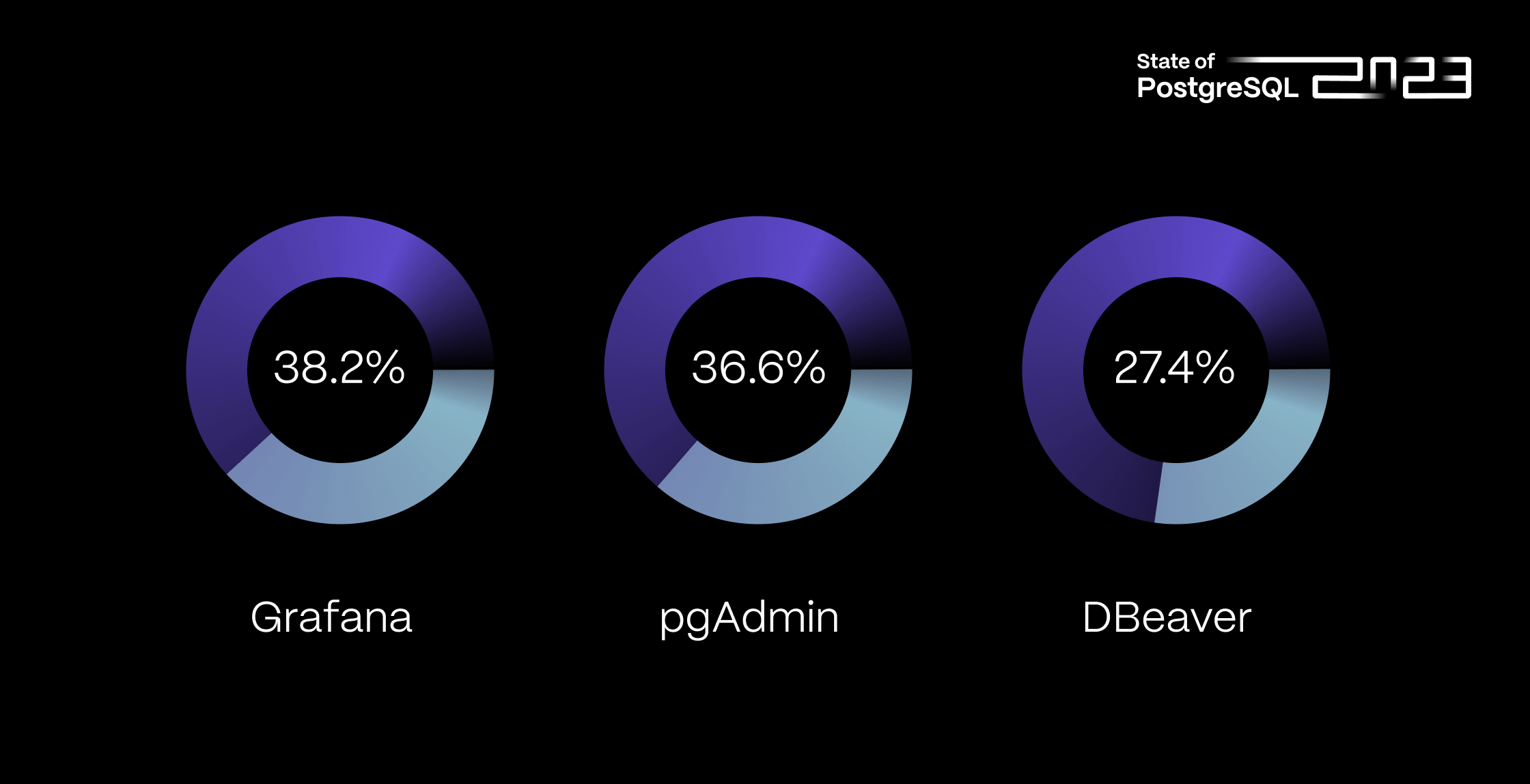
Read the Report
We hope you enjoyed this sneak peek of our State of PostgreSQL 2023 survey! If you’d like to learn more insights about the PostgreSQL community, including why respondents chose PostgreSQL, their opinion on industry events, and what information sources they would recommend to friends and colleagues, don’t miss our complete 2023 State of PostgreSQL report.
Finally, a genuine word of appreciation to all the remarkable partners who have collaborated with us on this survey and helped us capture the collective experience of developers using PostgreSQL. Aiven, Basedash, Command Prompt, EDB, Grant Fritchey, OnGres, Postgres Weekly, Supabase, Timbira, and PGConference—we’re talking to you! Thank you for amplifying our reach and enabling us to connect with more developers across various channels!




